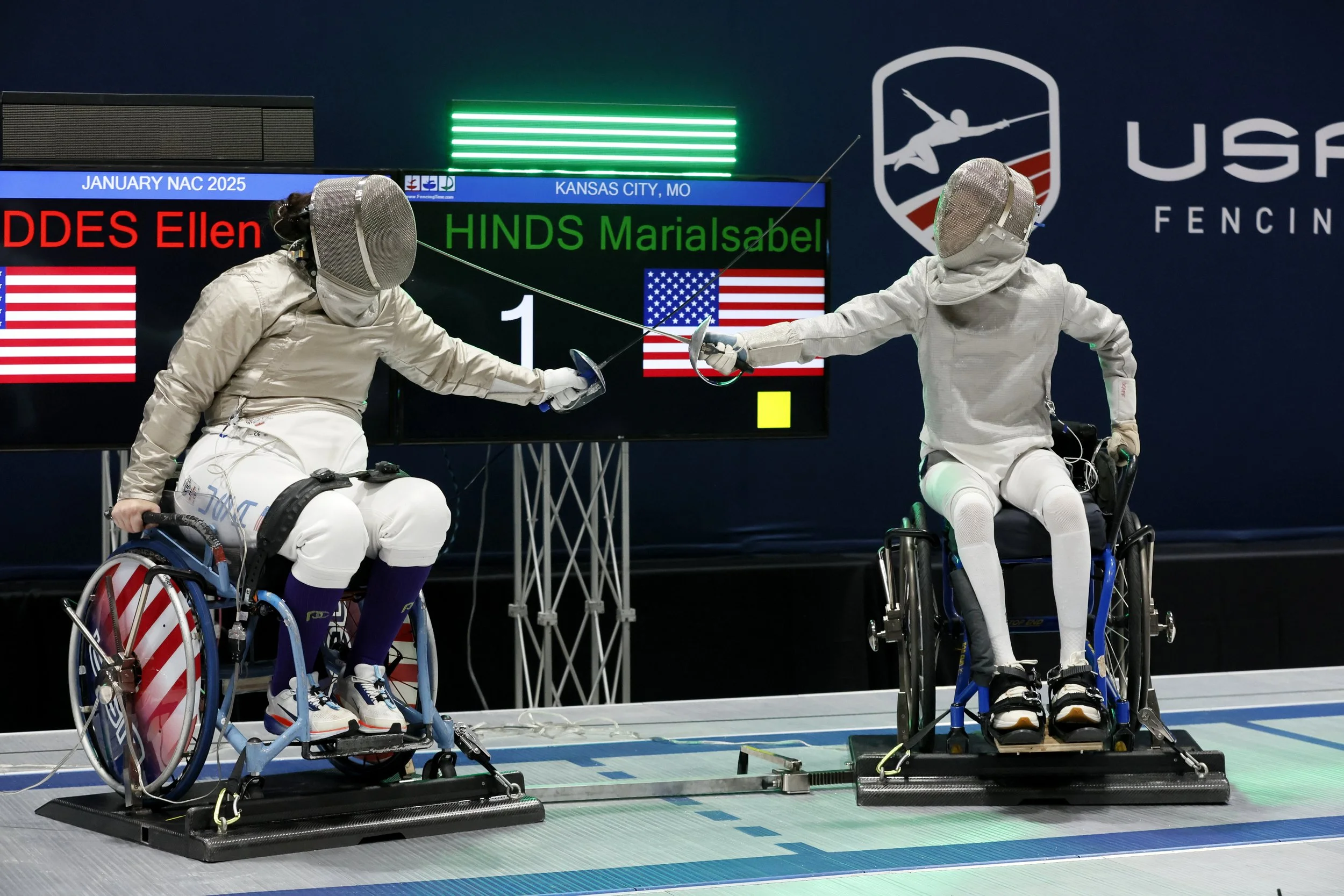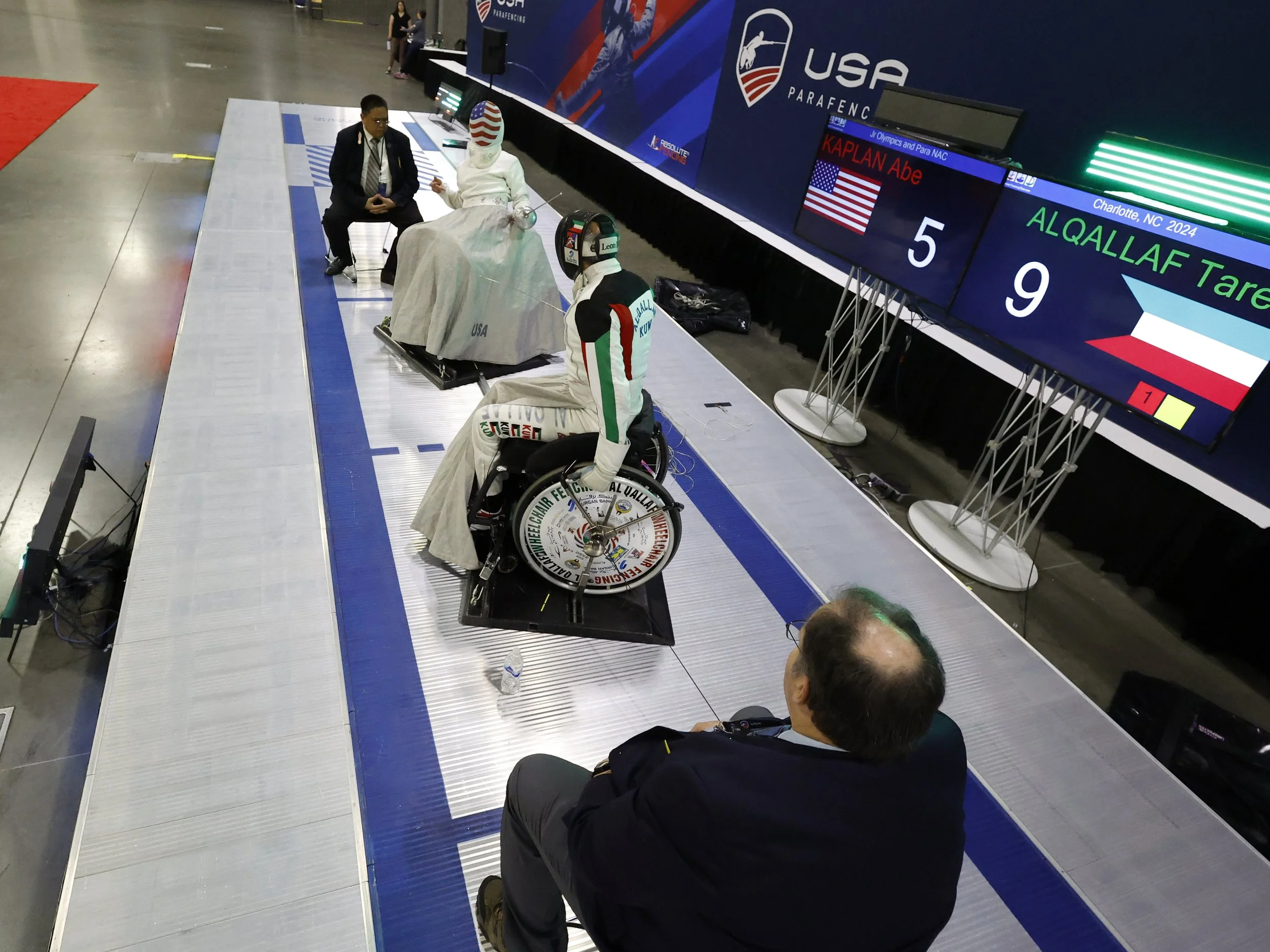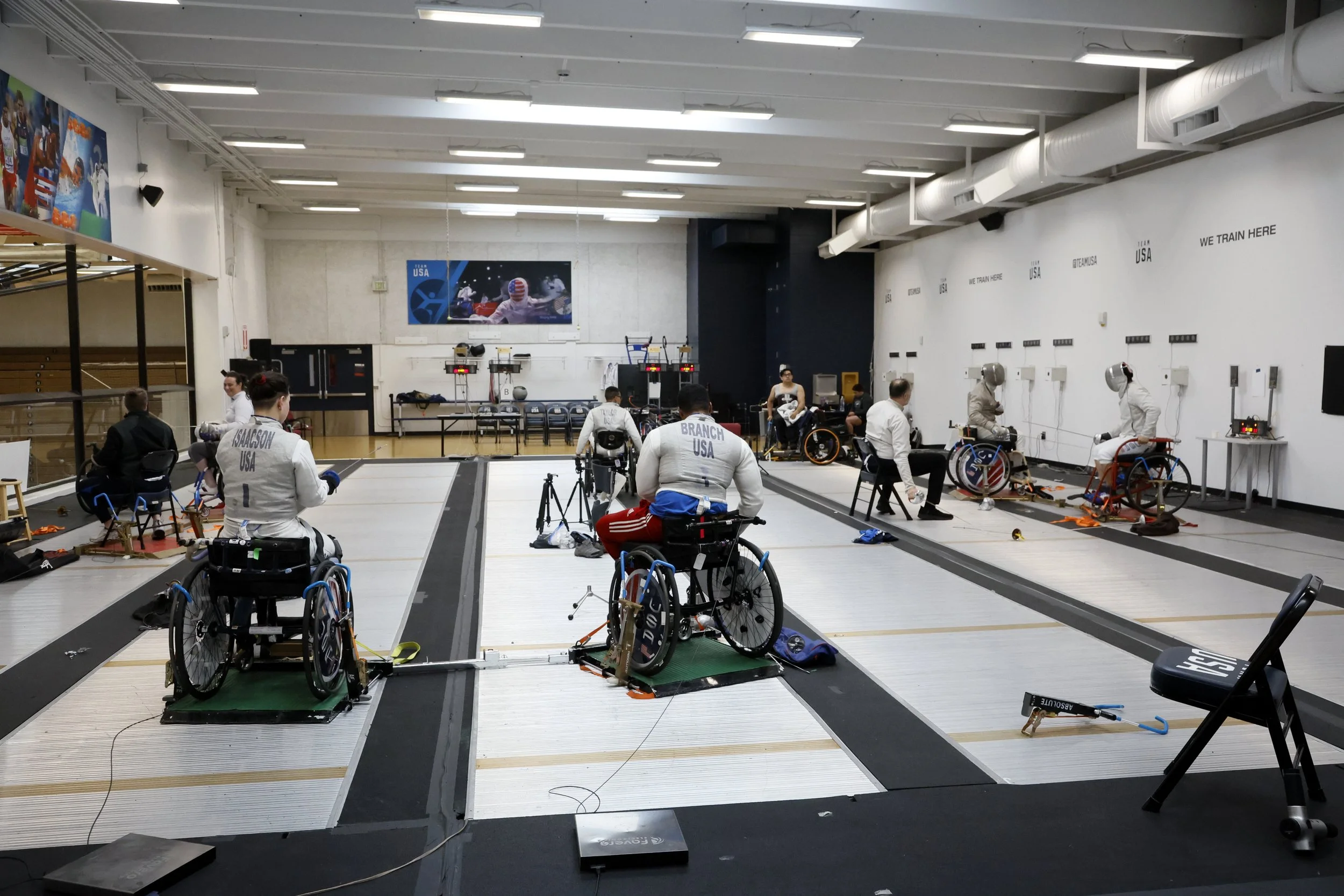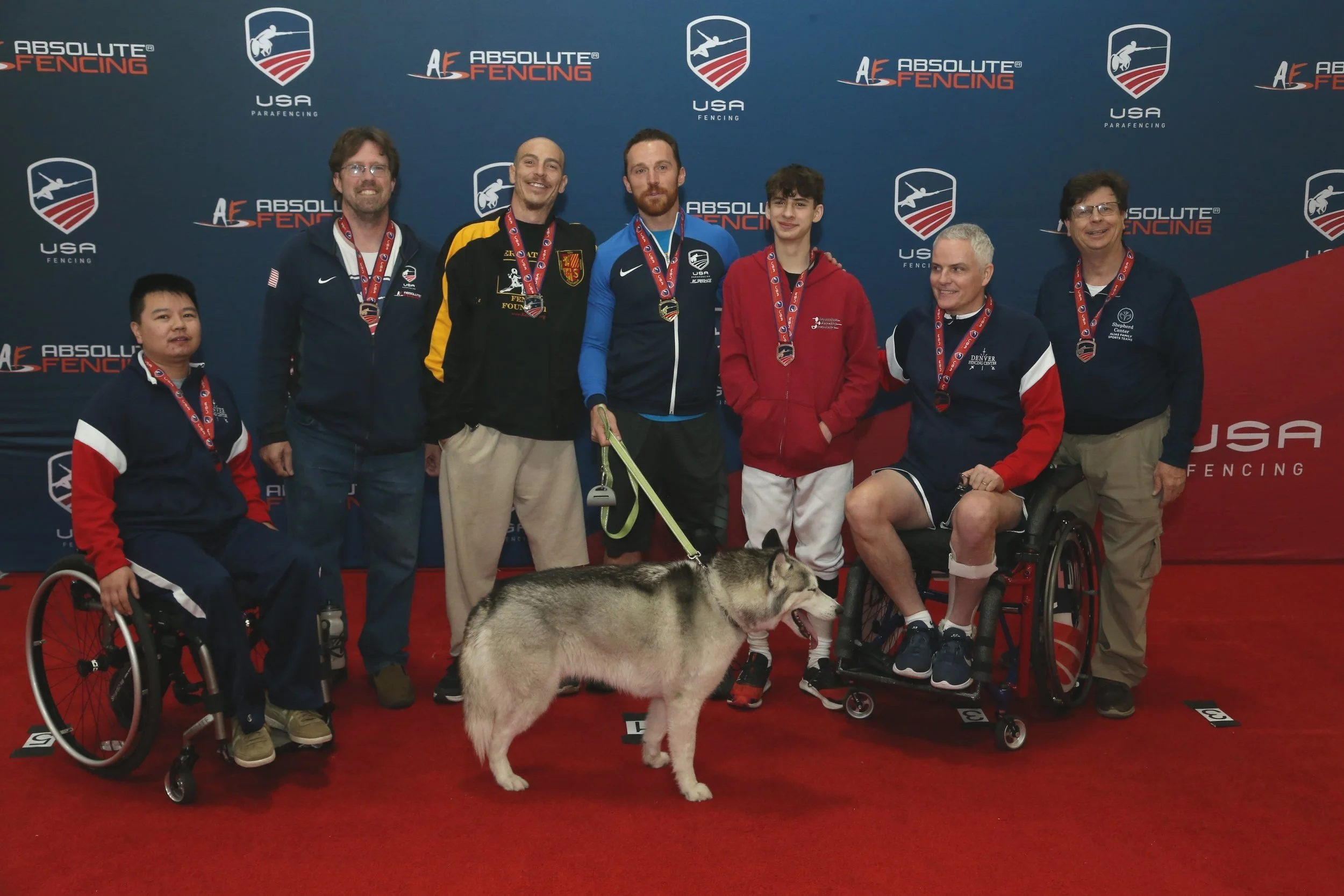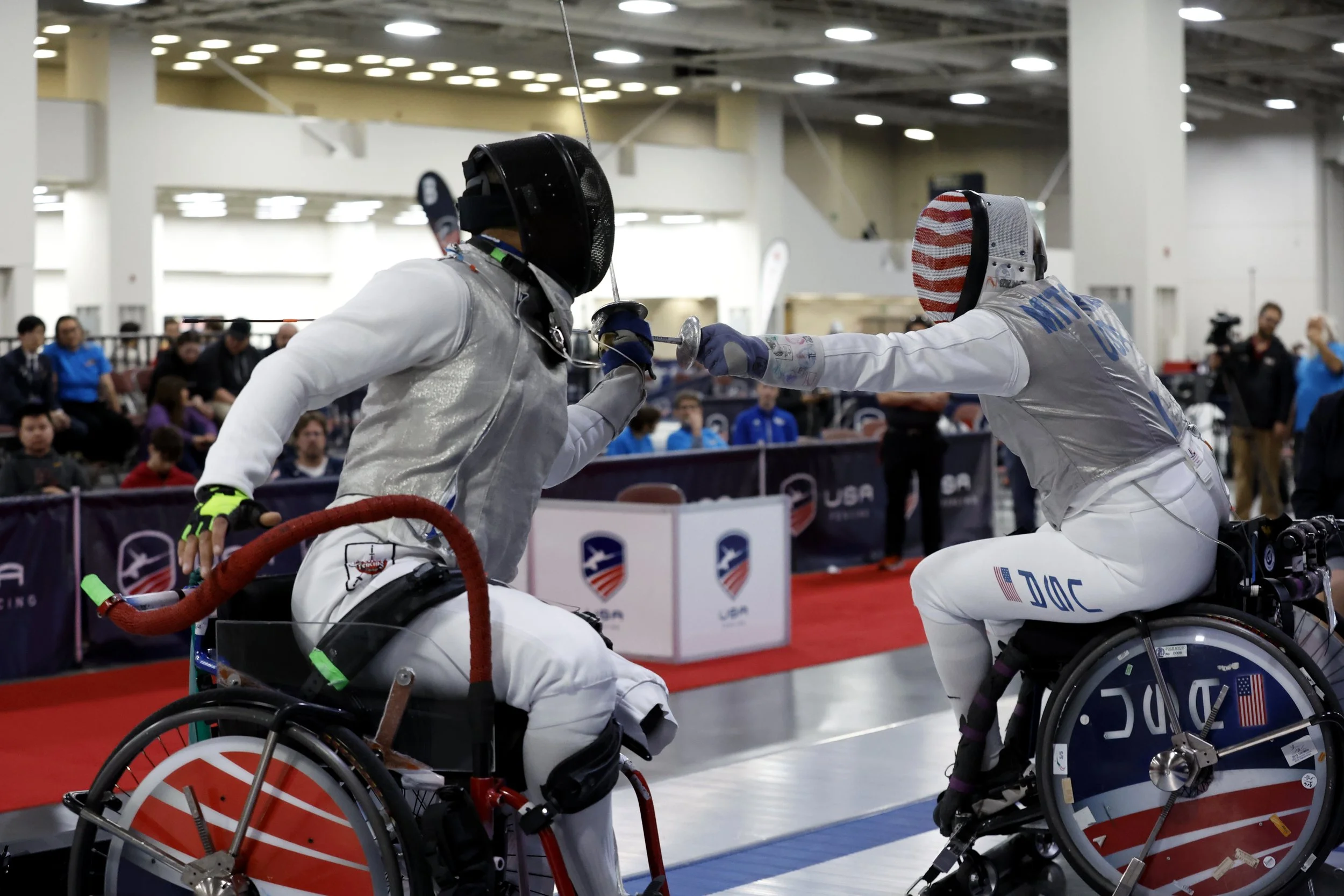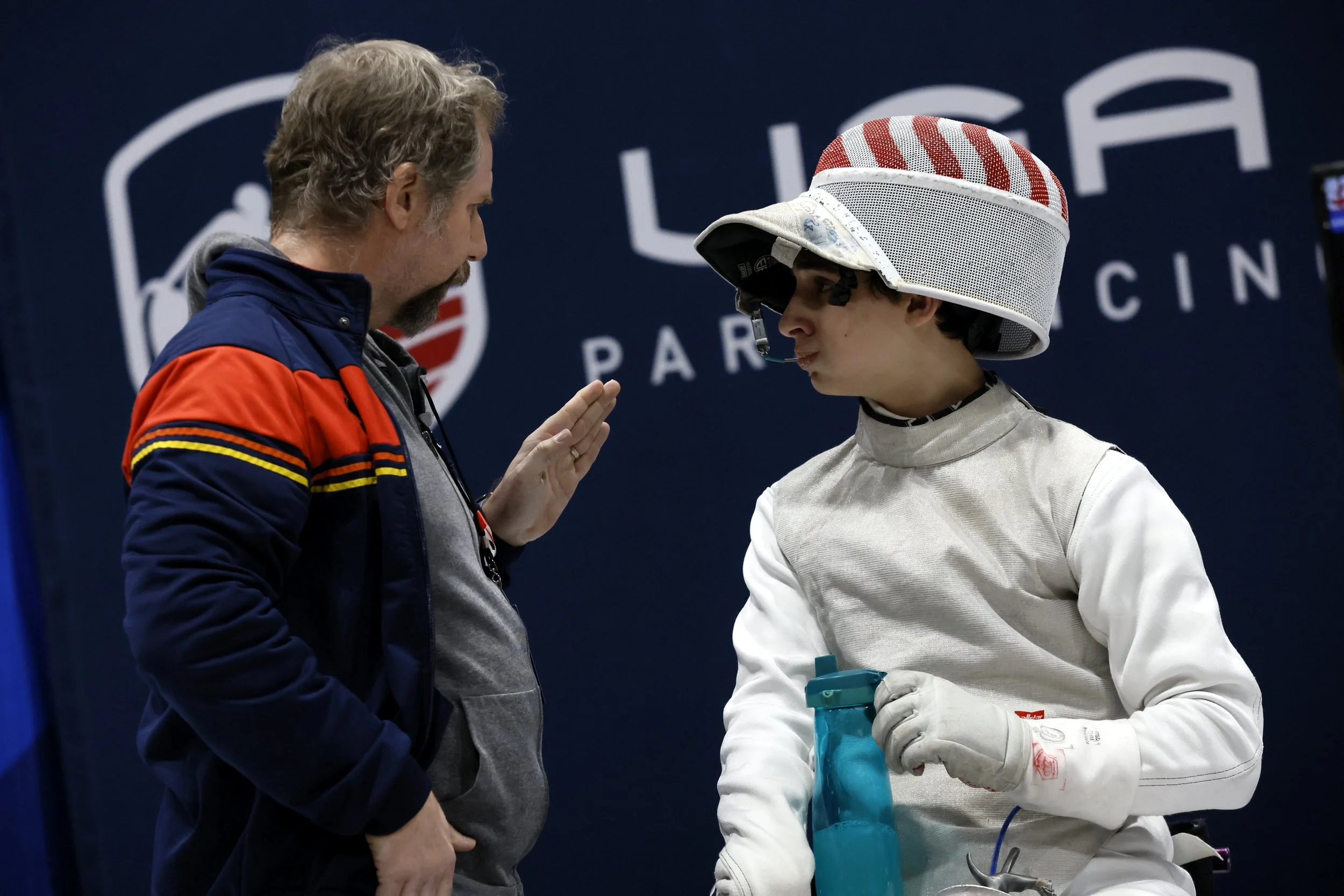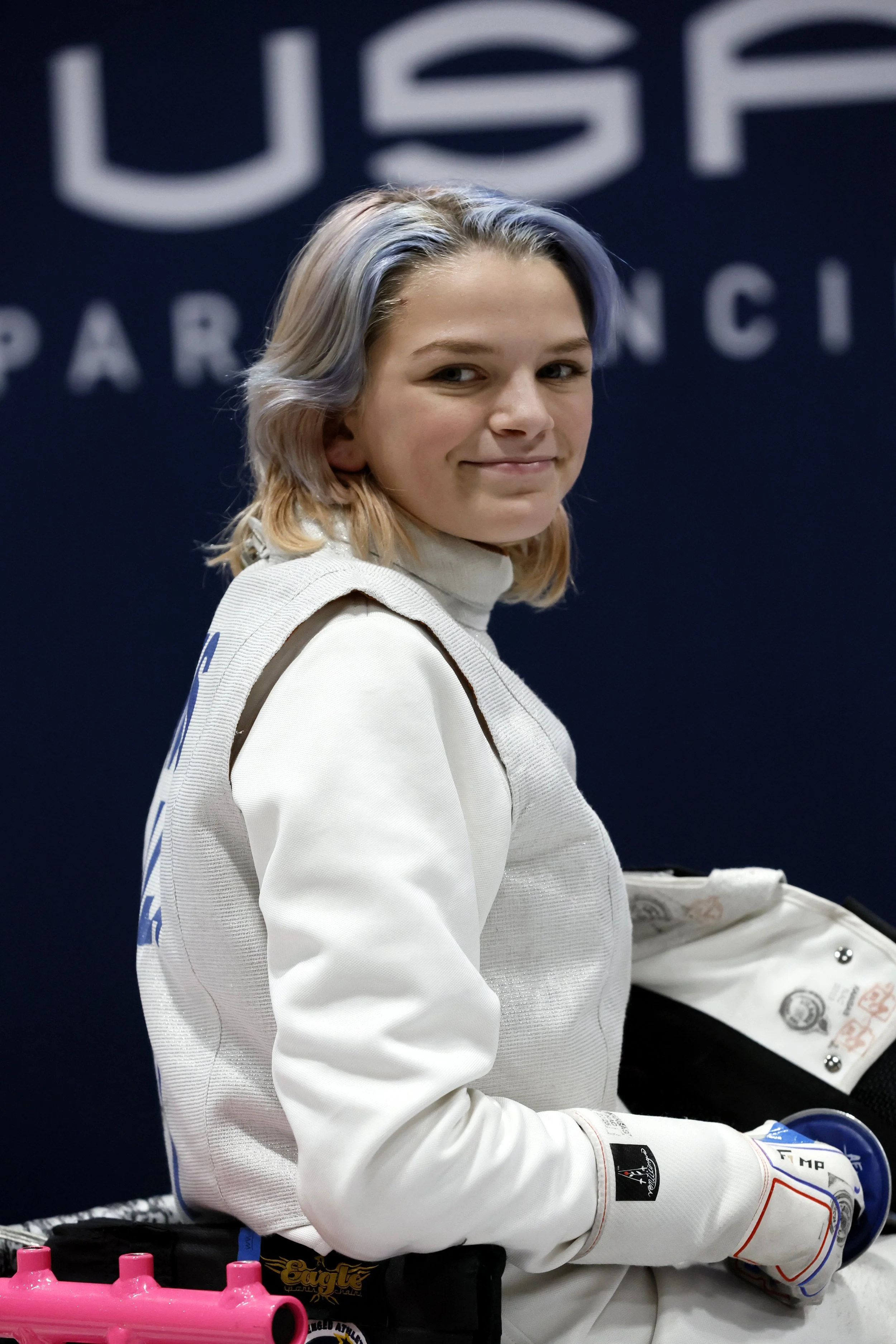Raising the Bar: Supporting Parafencing and Adaptive Athletes
Parafencing demands lightning-fast reflexes.
When you watch a parafencer in action, you quickly realize something: fencing is about ability, not disability. Parafencing (wheelchair fencing) demands lightning-fast reflexes, exceptional tactics and the same mental toughness as able-bodied fencing — often requiring even greater core strength, precision and strategy.
As parafencing grows across the United States and the world, it's essential that athletes, coaches, clubs and the broader fencing community understand how to best support adaptive athletes — not just in competition, but every day.
Inclusive excellence is the future of fencing. And for those of us lucky enough to support these athletes firsthand, the future has never looked brighter.
What is Parafencing?
Parafencing is an adaptation of fencing for athletes with physical disabilities, particularly those affecting the lower limbs. It has been part of the Paralympic Games since Rome 1960, and it mirrors the three classical weapons — foil, epee, and saber — with adjustments for seated competition.
Parafencing classification systems ensure fair competition based on the type and extent of an athlete’s impairment.
In parafencing:
Athletes compete in wheelchairs fixed to a frame that anchors them in position.
The bout area is a defined horizontal plane rather than a full piste.
Movements focus heavily on upper-body agility, reach and tactics rather than footwork.
Classification systems ensure fair competition based on the type and extent of an athlete’s impairment. For example:
Category A athletes typically have good trunk control and full arm function.
Category B athletes may have more limited trunk control and/or impairments affecting the fencing arm.
Parafencing is just as aggressive, strategic and demanding as able-bodied fencing.
The Growth of Parafencing in the U.S.
While Europe and Asia have long-established parafencing traditions, the United States has been catching up quickly. Organizations like USA Fencing have expanded parafencing programs, and more clubs across the country are offering adaptive fencing opportunities.
Several American parafencers have made international headlines with podium finishes, strong Paralympic performances and leadership in promoting adaptive sport.
Olympic & Paralympic Training Center, Colorado Springs, Colorado
As a provider supporting elite parafencers, I have witnessed firsthand the dedication, athleticism and innovation these athletes bring to every training session and competition. Their work ethic and spirit set the standard — not just within parafencing, but within the broader fencing community.
Yet challenges remain: parafencing athletes often face barriers in access to facilities, coaching, equipment and competition opportunities.
Supporting Adaptive Athletes: Beyond the Basics
True support for parafencers goes beyond simply allowing participation. It requires creating environments where adaptive athletes can thrive at every level.
Here are critical areas for the fencing community to focus on:
1. Accessible Facilities and Equipment
One of the first hurdles for parafencers is access to properly equipped spaces:
Clubs should have ramps and/or elevators and accessible bathrooms.
Adjustable frames for wheelchair fencing must be available to secure athletes safely and correctly during bouts.
Specialized wheelchairs — fencing chairs are different from everyday chairs — need to be sourced or provided for regular training.
Even small adjustments, like keeping doorways clear and organizing gear thoughtfully, can make a huge difference in how welcoming a space feels to athletes.
2. Coach Education and Adaptability
Even small adjustments, like keeping doorways clear and organizing gear thoughtfully, can make a huge difference in how welcoming a space feels to athletes.2. Coach Education and Adaptability
Working closely with parafencers, I have seen how individualized recovery, strength, and mobility plans make a tremendous difference.
Inclusive excellence is the future of fencing.
Coaching parafencers isn’t about reinventing fencing technique — it's about adapting traditional methods thoughtfully:
Focus on core strength, arm reach and upper-body conditioning.
Emphasize tactical positioning and hand-speed drills that maximize efficiency from a seated position.
Develop adaptive lesson plans that allow athletes of different abilities to progress at their own pace.
Increasingly, coaching certification programs are offering adaptive sports modules, but even without formal training, a coach’s open-mindedness and willingness to learn are key.
The motto for coaching adaptive athletes? Ability first. Disability second.
3. Community Integration
Parafencers shouldn’t be isolated from able-bodied peers:
Integrated practices where parafencers and able-bodied athletes train together build camaraderie and respect.
Mixed-team events or exhibitions can break down misconceptions and highlight para-athletes’ skill levels.
Community service projects, fundraisers and social events should include adaptive athletes as full team members.
Inclusion means valuing adaptive athletes not just as competitors, but as essential parts of the fencing family.
4. Funding and Resource Support
Adaptive sports can be costly, and fencing is no exception. Wheelchairs, travel, equipment modifications and specialized coaching often come with significant expenses.
Ways in which clubs and organizations can help:
Pursue grants and sponsorships that specifically support adaptive athletes.
Offer reduced or sliding scale fees for lessons and competitions.
Create equipment loan programs for beginning parafencers.
Investment in adaptive athletes is an investment in the future of fencing overall.
Training for the Paris 2024 Paraympics in Colorado Springs.
5. Integrated Medical and Performance Teams
Elite parafencers rely not just on fencing skills but on comprehensive care and performance optimization. Athletic trainers, physical therapists, sports chiropractors, nutritionists and mental health professionals who understand adaptive sport are vital team members.
Increasingly, coaching certification programs are offering adaptive sports modules
Working closely with parafencers, I have seen how individualized recovery, strength, and mobility plans make a tremendous difference. Adaptive athletes deserve access to the same high-level support structures available to able-bodied Olympians.
6. Mental Health and Peer Support
Adaptive athletes often face unique psychological challenges, including navigating accessibility barriers, societal perceptions and sometimes a sense of isolation.
Fencing clubs can do much to address these challenges:
Encourage mental wellness initiatives, like sports psychology sessions or peer support groups.
Connect athletes with mentorship programs, pairing new parafencers with experienced adaptive athletes.
Celebrate achievements — both big and small — to reinforce the sense of belonging and accomplishment.
Celebrate achievements — both big and small — to reinforce the sense of belonging and accomplishment.
Final Thoughts: A Call to Action
The future of fencing is diverse. It's filled with athletes of all backgrounds, abilities, and experiences. Supporting parafencing isn't about charity — it's about recognizing the extraordinary athleticism, discipline and passion these competitors bring to the piste.
Whether you're a coach adjusting your lessons, a club owner investing in accessibility, a fencer sharing your training space or a provider working behind the scenes, your actions matter.
True sportsmanship is about leveling the playing field, and then watching excellence rise.
Fencing has always been a sport of honor. Let’s continue that tradition by building a future where every athlete, adaptive or not, can fence fearlessly.
Jasmine Brewster Piper DC, DACBSP is a sports chiropractor and concussion specialist who works closely with members of the U.S. Paralympic fencing team. She specializes in adaptive athlete care, concussion management, injury prevention and performance optimization. Passionate about advancing equity in sports medicine, she advocates for greater access and support for adaptive athletes at every level of competition.
Photos: Serge Timacheff

